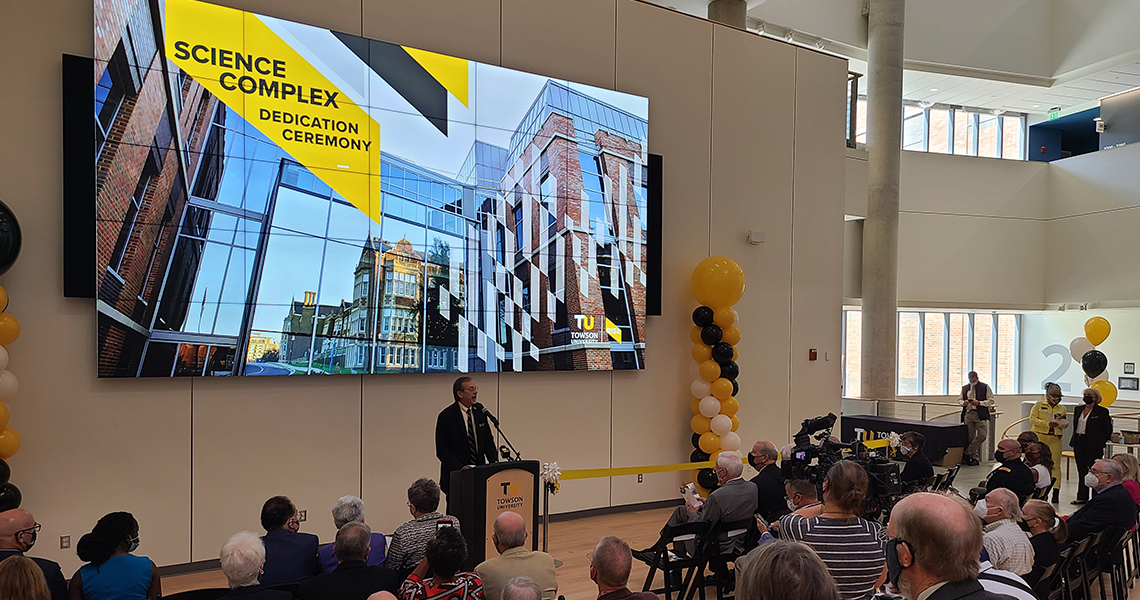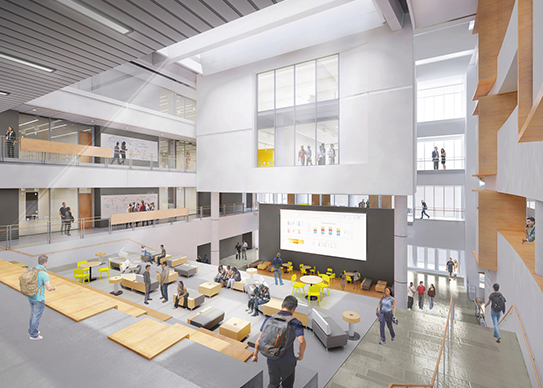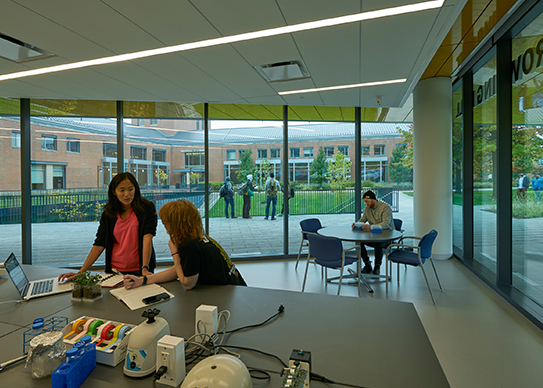Connections to the Mission
Towson University’s mission is to foster intellectual inquiry and critical thinking, preparing graduates who will serve as effective, ethical leaders and engaged citizens.
Aligned with this mission, University leadership has been planning the most efficient and effective way to support student population growth (enrollment surged 130 percent between 1998 and 2018). In addition to the increase in undergraduates on campus, the University has also seen an increase, far surpassing projections, in science majors. For these reasons, Towson decided to create a new academic teaching and research facility that supports the natural sciences, science education and research.
Connections to the Campus
Recognizing that this new building would be the largest building on campus, our design team took great care to scale the Science Complex appropriately to its surroundings. A contemporary yet respectful interpretation of the existing campus vernacular, the complex sits comfortably between historic buildings. Its indoor and outdoor spaces connect directly to the cherished Glen Arboretum, which is planned to be a living extension of the environmental program.
Towson University recently released this video to celebrate the opening of the building.
Connections to the Building
The new, multistory atrium is intended to foster spontaneous encounters between faculty and students—both science and non-science-focused—to create new synergies among previously distinct areas of study. Featuring theater-style seating for presentations or events and access to a Student Success Center, the atrium gracefully descends two floors from the north to south and connects the building to the main campus through a series of interior and exterior spaces. These include a variety of open and intimate areas filled with natural daylight from skylights, creating a vibrant heart within the building where students and faculty can meet.
Connections to the Sciences
The program sought to maximize the connection between teaching and research, and to foster collaboration among multidisciplinary programs. Departments in the complex include biology, physics, astronomy, geosciences, chemistry, science education, and environmental sciences, in addition to multiple specialized environments, such as a greenhouse, planetarium, urban environmental biogeochemistry lab (UEBL), and a small animal and aquatics vivarium suite.
Working with University leadership, our design team developed an integrated zoning concept to indicate the main departmental identity (Biology, PAGs, and Chemistry), while also illustrating the shared non-departmental laboratory environments, also noted as the “collaborative neighborhoods.” Towson envisions that the collaborative neighborhoods will maintain a higher level of flexibility and adaptability, supporting the development of emerging academic needs or other programmatic evolutions during the life of the building. Each neighborhood consists of office administration, teaching labs and research labs, sized respectively to their program needs and anticipated growth. This neighborhood grouping strategy is a clear break from traditional science building layouts and furthers Towson’s goal to connect disciplines, teaching and research in new and exciting ways.
Overall, the new building is allowing Towson University to teach the core sciences to all students and promote research and collaboration between all departments. Additionally, it is reinforcing the existing pedestrian movements across campus and to the glen, and acting as a good neighbor to Towson’s first building, Stephens Hall.



